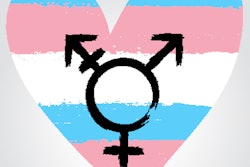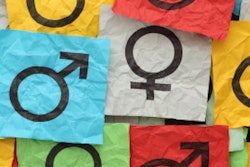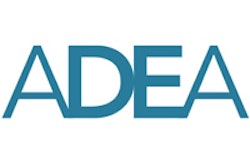
This article is reprinted with permission from the American Student Dental Association. It originally appeared in the summer 2013 issue of Mouth.

Studies conducted by the U.S. Surgeon General's Report on Oral Health in America, the U.S. Census Bureau, and National Institutes of Health have documented both racial and ethnic disparities in dental care and the lack of diversity in the professional workforce. As America's minority populations continue to grow, these studies mandate that so should the diversity of its oral health providers.
According to recent figures, underrepresented minorities together represent about 30% of the U.S. population. By 2050 that figure is estimated to climb to 50%. Currently, of the 181,000 U.S. dentists, only 6% are Hispanic, African-American, or Native American.
One reason for increasing the diversity of oral health practitioners is that some patients prefer dentists who are of the same race or ethnicity. In addition, minority dentists treat more minority patients than do nonminority dentists, an important consideration for breaking down barriers to care for underserved and vulnerable patient populations. These and other findings in the Sullivan Commission's 2004 report highlight the necessity for dental education to expand the diversity of its dental students to meet the projected changes in our nation's demographic composition.
For dental schools, the challenge is to reach out, connect, and matriculate qualified applicants of minority status into their programs. Kim D'Abreu, senior vice president for access, diversity, and inclusion in the policy center at the American Dental Education Association, believes there is a "large pool of qualified and talented students of diverse backgrounds who have not been recruited by dental schools or made aware of career opportunities in dentistry."
D'Abreu wrote in a post on the Robert Wood Johnson Foundation's Human Capital blog that about 12,500 students from underserved backgrounds graduate from college with degrees in the biological sciences and a 3.00 GPA. Less than 5% of them enrolled in dental school. To raise that percentage, dental schools "must create new tools and strategies to attract these students," she wrote.
The Robert Wood Johnson Foundation sponsors a six-week summer enrichment program at 12 universities across the nation. The intent is to introduce underrepresented populations to medicine, including dentistry.
One approach dental admission committees have implemented is called holistic file review. Historically, GPAs and Dental Admissions Test (DAT) scores solely determined an applicant's success for acceptance to dental school. The holistic file review is a process whereby dental admission committees evaluate candidates not only on their GPA and DAT scores, but also on their leadership, volunteerism, socioeconomic background, and life experiences. These "noncognitive variables" represent a shift in how some dental schools recruit students from an applicant pool whose ethnic and cultural diversity mirrors the growing diversity of the U.S. population.
"My philosophy is the younger the better" when it comes to introducing students to dentistry, said Pamella Shaw, DMD, MPH, associate dean for diversity, equity, and inclusion at the Indiana University School of Dentistry. "The best thing to do is start before they get to the predental stage," she added.
D'Abreu concurred, stating that, "Market research on perceptions about careers in dentistry has revealed that early and frequent exposure to dentistry and dentists is essential in motivating minority students to choose dentistry as a profession."
The Indiana dental school will partner with Ivy Tech Community College-Central Indiana to reach out to underrepresented minority students. Dr. Shaw said Ivy Tech is the perfect community partner, given its existing summer programs for high school students and Ivy Tech students, as well as a significant enrollment of students who are minorities.
Dr. Shaw, in addition to envisioning a summer program, also desires to form a predental group at Ivy Tech with students who are interested in the sciences and health-related fields. She wants to engage these students with hands-on activities at the dental school.
"Dentistry is not like a lot of careers," Dr. Shaw said. "Most people don't wake up and say, 'That's for me.' Realistically, that happens when you get exposed to it and understand how it fits into a lot of things you want to do, such as becoming a healthcare professional, using your hands, using your artistic skills, and being able to put a smile on someone's face."
"You have to work a little harder to get students to look at dentistry," she said. "But once they see what dentistry offers and they are motivated, they will keep going and going."
The U.S. government's Office for Civil Rights defines "diversity" as a term "used broadly to refer to many demographic variables, including, but not limited to, race, religion, color, gender, national origin, disability, sexual orientation, age, education, geographic origin, and skill characteristics."
Dental education has experienced success in increasing one aspect of diversity -- that of gender diversity. In the 2009-2010 academic year, women represented 45% of the approximately 20,000 students enrolled in dental schools were women. Thirty years ago, less than a quarter of all dental students were women.
Dental school administrations are also developing initiatives to embrace other types of diversity in the effort to create a culturally sensitive learning environment. Anderson and colleagues in a 2009 issue of the Journal of Dental Education report that the number of adults who identify themselves as a lesbian, gay, bisexual, and transgender (LGBT) minority is increasing (JDE, January 2009, Vol. 73:1, pp. 105-118). The authors posit "dental education needs to prepare future dental care providers to provide care for patients from nonheterosexual backgrounds to be able to treat these patients in a professional manner."
Many dental schools have created student-led organizations dedicated to enhancing the visibility of its minority dental student members. For example, in 2009 the University of California, San Francisco created the Gay/Straight Dental Alliance (GSDA). According to the university, the GSDA was "created to enhance and enrich the climate for lesbian, gay, bisexual and transgendered individuals."
The effort is intended, according to John D.B. Featherstone, MSc, PhD, the dental school's dean, "to make the dental profession a more welcoming and inclusive environment for everyone."
His remarks sound a rallying point posited by Sheila Price, DDS, EdD, and Donna Grant-Mills, RDH, DDS, MEd, authors of a 2010 JDE supplement addressing admission practices to increase student diversity (October 2010, Vol. 74:10 suppl, pp. S87-S97). Drs. Price and Grant-Mills wrote, "Diversity in dental schools enhances the educational experience, builds a more diverse future workforce, and improves access to quality oral healthcare for all segments of the U.S. population."
Clayton Luz is a freelance writer for the American Dental Student Association.



















